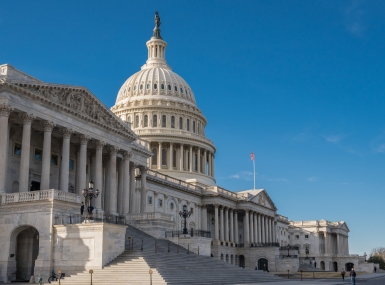NACo releases new resource on the Supplemental Nutrition Assistance Program (SNAP)
Upcoming Events
Related News

Key Takeaways
Earlier this month, NACo released a new resource on the Supplemental Nutrition Assistance Program (SNAP, formerly known as food stamps). The report, Counties and the SNAP Program, details SNAP’s role in our nation’s social safety-net and how counties help to fund and administer SNAP services to support low-income residents.
SNAP primarily operates as a federal-state partnership, although ten states delegate SNAP administration to county agencies: California, Colorado, Minnesota, New Jersey, New York, North Carolina, North Dakota, Ohio, Virginia and Wisconsin. In these states, counties are responsible for program administration and contribute significant local funds to the costs of operating the program.
SNAP, formerly called food stamps, is a federal public assistance program offering nutrition support to eligible low-income individuals and families. The program currently serves 42 million residents across the nation, making it the largest program addressing hunger in America. The federal food stamps program provides counties and states with resources for temporary benefits to individuals in need, so all residents have access to nutritious food. SNAP responds quickly to changes in population, growing in response to increases in poverty and unemployment and shrinking as need is met and reduced.
The release of NACo’s SNAP report comes as Congress passed and President Trump signed the 2018 farm bill into law, and the U.S. Department of Agriculture (USDA) looks to reform SNAP’s current program structure. NACo has closely monitored the reauthorization of SNAP, and will weigh in on the USDA proposed regulation.

Attachments
Related News

U.S. Congress begins work on budget reconciliation process: What this means for counties
The House and Senate Budget Committees have marked up Fiscal Year (FY) 2025 budget resolutions to initiate the budget reconciliation process to enact policy priorities without garnering bipartisan support, although the two chambers differ in their approach to drafting the legislation.
Panel: People in crisis need support, not handcuffs
Counties can better serve people experiencing a behavioral health crisis by engaging behavioral health specialists instead of law enforcement, experts told county officials at a recent meeting held at NACo headquarters.

Lawmakers reintroduce the Build Housing with Care Act
On January 30, Senator Ron Wyden and Congresswoman Bonamici reintroduced the Build Housing with Care Act. This legislation would establish a new competitive grant program under HUD intended to boost the supply of co-located child care facilities and affordable housing developments.